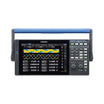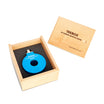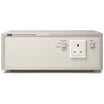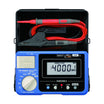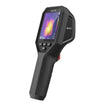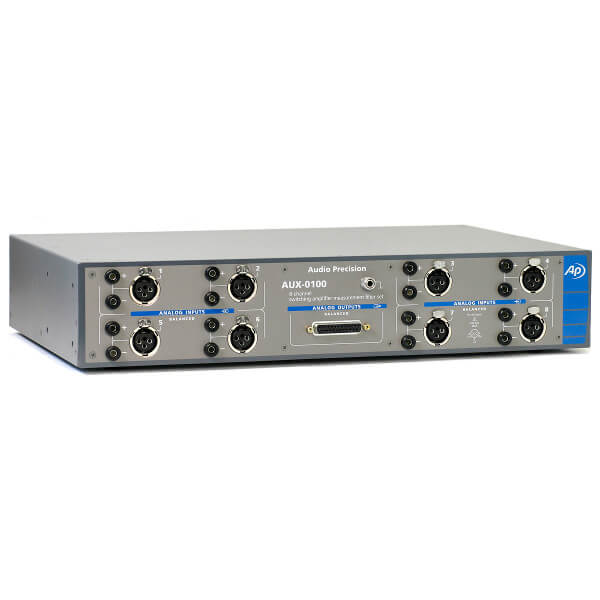
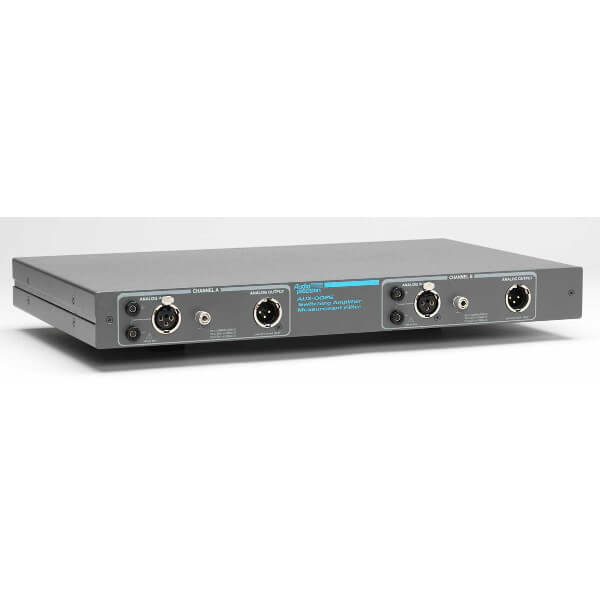

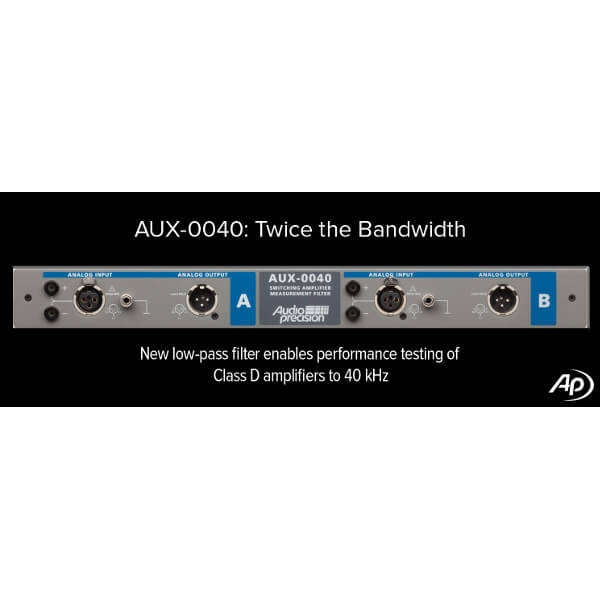
Audio Precision AUX-0025 Measurement Filters
Use our chat for personal support or contact us via +45 31 33 18 19 or salg@GOmeasure.dk
- Number of Channels: 2
- Frequency Response: ±0.05 dB, 20 Hz to 20 kHz
- Insertion Loss: Typically −0.054 dB
- High-Frequency Rejection: Typically > 50 dB, 250 kHz to 20 MHz
- Maximum Input: ±200 Vpk [140 Vrms], dc to 7.5 kHz, decreasing to 75 Vpk [53 Vrms] from 20 kHz to 2 MHz
- Interchannel Crosstalk: 90 dB at 20 kHz
- Distortion: < -110 dB harmonic (measured at 70 Vpp, 1 kHz), < -100 dB IMD (at 70 Vpp with 18 kHz and 20 kHz dual-tone test signal)
Discover the possibilities
More information
Description
Providing signal preconditioning for measurement accuracy in Class-D amplifier test
The Audio Precision AUX-0025 switching amplifier measurement filters are designed to be inserted between the device under test and an analyzer input, to reduce out-of-band switching signal components before measurement. The filters use a passive design for optimal performance, with custom inductors designed for high power handling and minimal low-frequency distortion.
The AUX-0025 is a two-channel passive filter, with a 20 Hz to 20 kHz passband. It is designed to be used with two-channel analyzers, including the APx555, APx52x Series and 2700 Series test systems.
Manufacturers of power amplifiers are moving to switching designs (also called Class D or switch-mode) to make their amplifiers lower cost and more efficient compared to conventional linear power amplifier designs. This technology has particular appeal in automotive and personal stereo applications where efficiency, low battery consumption, small size, and low cost are desired. However, amplifiers using this technology present new measurement challenges.
The switching process adds fast rising edges at the switching frequency to the audio output signal. These fast edges are of no consequence to the typical load (a loudspeaker), but present a difficult signal for measurement instruments. The fast switching edges present high energy content and will introduce slew rate limiting when presented to the input stage of most measurement instruments. When stressed by these fast edges, the analyzer input amplifier will usually slew rate limit and will not be able to function effectively in its normal mode. Auto ranging will be affected and the signal under test will be misrepresented to the following measurement circuits. The result is that noise and distortion measurements of switching amplifiers with almost any analyzer without preconditioning will yield inaccurate and unpredictable results.
For more information: Audio Precision
Specifications
Documents
Options
Video
Providing signal preconditioning for measurement accuracy in Class-D amplifier test
The Audio Precision AUX-0025 switching amplifier measurement filters are designed to be inserted between the device under test and an analyzer input, to reduce out-of-band switching signal components before measurement. The filters use a passive design for optimal performance, with custom inductors designed for high power handling and minimal low-frequency distortion.
The AUX-0025 is a two-channel passive filter, with a 20 Hz to 20 kHz passband. It is designed to be used with two-channel analyzers, including the APx555, APx52x Series and 2700 Series test systems.
Manufacturers of power amplifiers are moving to switching designs (also called Class D or switch-mode) to make their amplifiers lower cost and more efficient compared to conventional linear power amplifier designs. This technology has particular appeal in automotive and personal stereo applications where efficiency, low battery consumption, small size, and low cost are desired. However, amplifiers using this technology present new measurement challenges.
The switching process adds fast rising edges at the switching frequency to the audio output signal. These fast edges are of no consequence to the typical load (a loudspeaker), but present a difficult signal for measurement instruments. The fast switching edges present high energy content and will introduce slew rate limiting when presented to the input stage of most measurement instruments. When stressed by these fast edges, the analyzer input amplifier will usually slew rate limit and will not be able to function effectively in its normal mode. Auto ranging will be affected and the signal under test will be misrepresented to the following measurement circuits. The result is that noise and distortion measurements of switching amplifiers with almost any analyzer without preconditioning will yield inaccurate and unpredictable results.
For more information: Audio Precision


